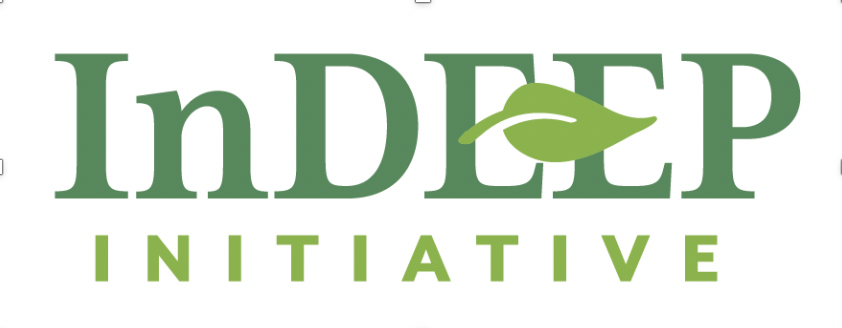Closing the Gap: Creating a Just World One Corner at a Time
The People’s Justice Council (PJC) defines environmental justice as a moral issue. “We’re working with communities of faith to ignite a moral conversation around energy, climate justice, and racial justice,” said the Rev. Michael Malcom, who founded the organization in 2018.
The Black church and the environmental justice movement
To spur this moral conversation, the PJC works actively with Christian denominations, especially those in the Southeastern United States, to bring in voices that have not traditionally been heard in the environmental movement.
Black, Indigenous, and people of color (BIPOC) communities are central to this conversation, according to Malcom. “We are the change,” he said, noting that the term “environmental racism” arose in Black churches.
The PJC encourages and trains communities of faith and faith leaders to speak to their legislators about policies that protect people and the planet. As executive director of the People’s Justice Council, Malcom serves as a bridge between these faith-based organizations and leaders and a range of climate networks, including “big green” organizations, that are working at both the national and international scale.
The environment is everything
The PJC sees the environment as “all things that surround us, all things that make our lives comfortable,” Malcom said. “When we say ‘environment,’ we’re also talking about energy, social issues, racial issues, land use. We’re talking about waste. We’re talking about health justice as well as economic justice.
“We’re speaking about environment as the right to breathe, the right to drink clean water, the right to healthy food sources, the right to energy, the right to health access, the right to access to information.”
To spread this message, the PJC has partnered with the United Church of Christ to offer Creative Justice webinars. Attendees – which now number 450 participants a month – include faith leaders and organizational leaders who represent congregations.
Energy access for BIPOC communities
Of particular concern to the PJC is the disproportionately high energy bills BIPOC communities pay. Faced with substandard, energy-inefficient housing, Malcolm said, these communities are “heating up the outside during the winter and cooling down the outside during the summer.”
Residents of these communities pay between 15% and 18% of their income on utilities. “How are they supposed to come out of poverty,” Malcom asked, “when they’re already being paid minimum wage as essential workers and they’re being robbed of wealth and wealth-building because their utilities are so astronomically high?”
PJC envisions a two-pronged solution: first to weatherize, then to make alternative energy sources like wind and solar accessible to vulnerable communities. Weatherizing homes and providing access to alternative energy sources is one, a moral issue, but it’s also an economical issue, and it’s a climate issue,” Malcom said. “It’s an easy fix. That should be a national program that we should really push.”
Through its WERISE program (Weatherizing Every Residence in the South East), the PJC has already started weatherizing homes in the Southeastern United States. The organization hopes to weatherize 30 homes in 2021. While the faith community is interested in the message of environmental justice, Malcom said that “energy justice and this solution of creating a ministry that addresses weatherization of homes” has gotten a lot of specific traction.
“Something practical to do has been more appealing than the actual theoretical conversation of what is environmental justice,” he said.
The council structure
The PJC has a small staff: four part-time employees (including Malcom), two contract employees, and a dedicated pool of seven to ten volunteers. When needed, the PJC can also call on the larger volunteer pool of the Southeast Conference of the United Church of Christ, which Malcom serves as Environmental Justice Minister.
To leverage the work of this small staff, the PJC uses a “council” structure. A well-rounded ministry is needed when it comes to environmental justice work, Malcom said. For that reason, the PJC’s board is diverse in terms of demographics, gender, geography, and discipline. The PJC embraces the Principles of Environmental Justice and the Jemez Principles for Democratic Organizing.
“What would it look like,” Malcom asked, “to have a doctor and a lawyer and a policy wonk and an environmental justice leader and a faith leader as well as a mental health professional all sitting down, looking at the statistics, looking at the data, and having conversations with the community and coming together to form a case study on what we can do to holistically help this community as well as helping the climate? That’s what a council looks like to me.”
The push for environmental justice in BIPOC communities is critical. “There’s constantly this sense of abandonment. It’s out of this place of desperation that innovation takes place,” Malcom said. “If we don’t save us, who will save us?”
A note on the Closing the Gap series: Black, Indigenous, and People of Color (BIPOC)-majority communities experience climate change and its harmful effects to a greater degree than other communities in the United States. The knowledge of this disproportionate impact of climate change is the basis of the modern environmental justice movement. What is not as readily evident or celebrated is how effectively BIPOC communities and organizations within these communities address climate change. This series of organizational profiles – known as “Closing the Gap” – highlights environmental organizations from across the country led by and/or serving BIPOC communities. The series is an extension of the Closing the Gap initiative, part of Inclusion, Diversity, and Equity in Environmental Philanthropy (InDEEP).

